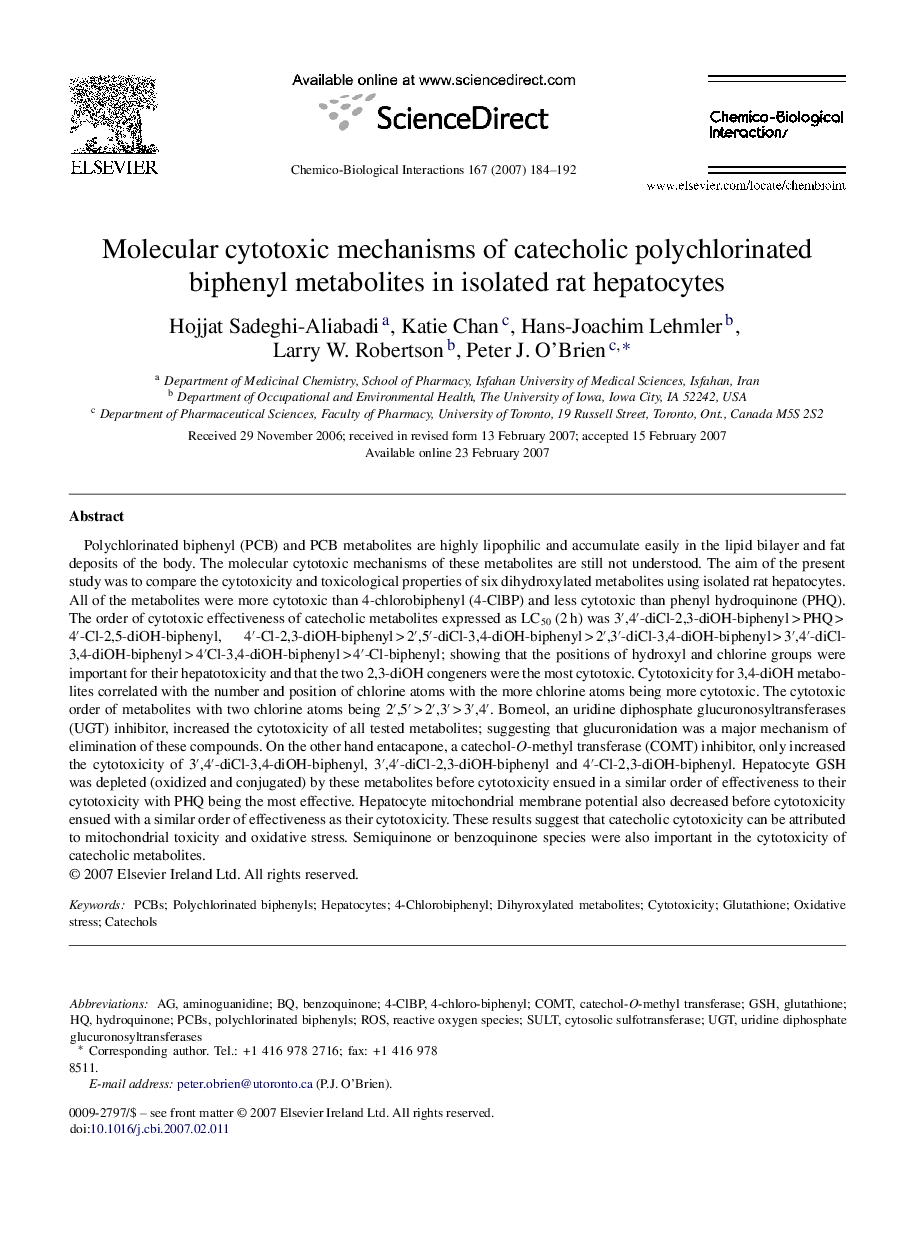| کد مقاله | کد نشریه | سال انتشار | مقاله انگلیسی | نسخه تمام متن |
|---|---|---|---|---|
| 2581954 | 1130214 | 2007 | 9 صفحه PDF | دانلود رایگان |

Polychlorinated biphenyl (PCB) and PCB metabolites are highly lipophilic and accumulate easily in the lipid bilayer and fat deposits of the body. The molecular cytotoxic mechanisms of these metabolites are still not understood. The aim of the present study was to compare the cytotoxicity and toxicological properties of six dihydroxylated metabolites using isolated rat hepatocytes. All of the metabolites were more cytotoxic than 4-chlorobiphenyl (4-ClBP) and less cytotoxic than phenyl hydroquinone (PHQ). The order of cytotoxic effectiveness of catecholic metabolites expressed as LC50 (2 h) was 3′,4′-diCl-2,3-diOH-biphenyl > PHQ > 4′-Cl-2,5-diOH-biphenyl, 4′-Cl-2,3-diOH-biphenyl > 2′,5′-diCl-3,4-diOH-biphenyl > 2′,3′-diCl-3,4-diOH-biphenyl > 3′,4′-diCl-3,4-diOH-biphenyl > 4′Cl-3,4-diOH-biphenyl > 4′-Cl-biphenyl; showing that the positions of hydroxyl and chlorine groups were important for their hepatotoxicity and that the two 2,3-diOH congeners were the most cytotoxic. Cytotoxicity for 3,4-diOH metabolites correlated with the number and position of chlorine atoms with the more chlorine atoms being more cytotoxic. The cytotoxic order of metabolites with two chlorine atoms being 2′,5′ > 2′,3′ > 3′,4′. Borneol, an uridine diphosphate glucuronosyltransferases (UGT) inhibitor, increased the cytotoxicity of all tested metabolites; suggesting that glucuronidation was a major mechanism of elimination of these compounds. On the other hand entacapone, a catechol-O-methyl transferase (COMT) inhibitor, only increased the cytotoxicity of 3′,4′-diCl-3,4-diOH-biphenyl, 3′,4′-diCl-2,3-diOH-biphenyl and 4′-Cl-2,3-diOH-biphenyl. Hepatocyte GSH was depleted (oxidized and conjugated) by these metabolites before cytotoxicity ensued in a similar order of effectiveness to their cytotoxicity with PHQ being the most effective. Hepatocyte mitochondrial membrane potential also decreased before cytotoxicity ensued with a similar order of effectiveness as their cytotoxicity. These results suggest that catecholic cytotoxicity can be attributed to mitochondrial toxicity and oxidative stress. Semiquinone or benzoquinone species were also important in the cytotoxicity of catecholic metabolites.
Journal: Chemico-Biological Interactions - Volume 167, Issue 3, 1 May 2007, Pages 184–192